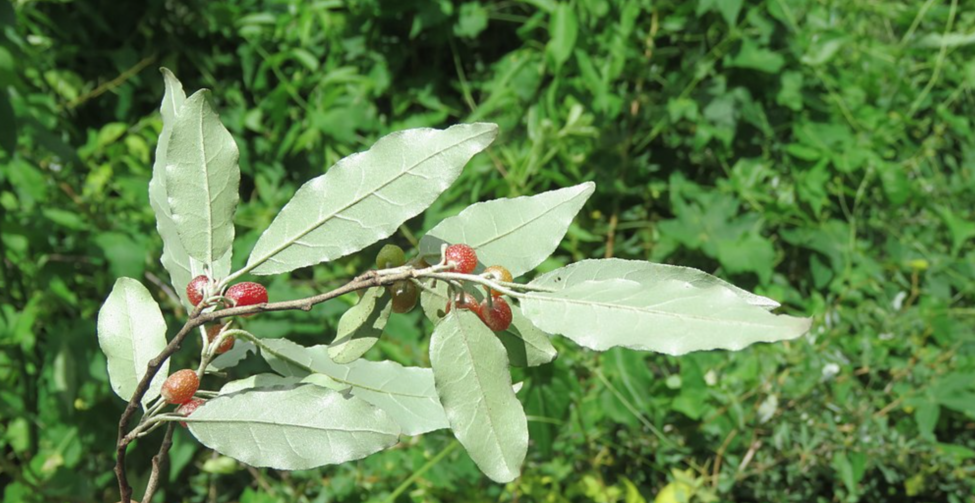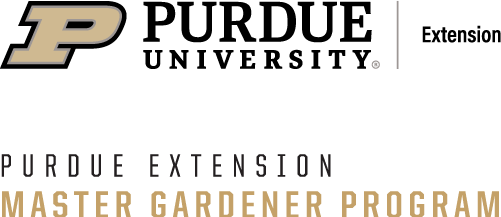The Autumn Olive is an invasive species in Indiana. This shrub can grow 20 feet in height. Leaves are alternate, lance-shaped, and have silvery dots underneath (a distinguishing identifying characteristic). The Autumn olive resembles the Russian olive, which is also an invasive species. This shrub produces small, yellow flowers with a pungent odor and reddish-pink berries. It also has thorny branches.
The autumn olive produces copious amounts of fruit, which are readily dispersed by birds. Its rapid growth rate crowds out native species. It has nitrogen-fixing capabilities which can also alter the nitrogen cycling in an invaded area.
In the 2000s, a group of professionals called the Invasive Plant Species Assessment Working Group (IPSAWG) conducted assessments and produced fact sheets on some key invasive species. They expanded upon the problems with autumn olive: “Autumn olive exhibits prolific fruiting, rapid growth, is widely dispersed by birds and can thrive in poor soil. It has the ability to produce up to 80 pounds of fruit in a single season. Due to its nitrogen-fixing capabilities, it has the capacity to adversely affect the nitrogen cycle of the native communities that may depend on infertile soils. It is vigorous and competitive against native species in open communities like prairies and savannas and resprouts after cutting or burning. It also creates heavy shade which suppresses plants that require direct sunlight.”
The Purdue resource suggests two possible management techniques: mechanical and chemical.
For mechanical control, small shrubs can be pulled by hand, but control depends on pulling up the entire root system. It has been noted that burning can cause vigorous resprouting, and cutting large bushes can result in denser growth.
Consider three types of chemical control. Foliar applications of herbicide can be effective in controlling autumn olive infestations. Large plants may be cut and stumps treated with triclopyr or glyphosate. A triclopyr and oil mixture may be sprayed on the lower 18 inches of stems as a basal bark treatment.
Finally, autumn olive is one of the plants included in Indiana’s Invasive Terrestrial Plant Rule, signed into law by Governor Holcomb in 2019. The Terrestrial Plant Rule (312 IAC 18-3-25) designates 44 species of plants as invasive pests. This rule makes it illegal to sell, gift, barter, exchange, distribute, transport or introduce these plants in the State of Indiana.
For a quick video on autumn olive narrated by Purdue Extension forester, Lenny Farlee, visit https://www.youtube.com/watch?v=DBMLX_-1QiQ.
Indiana Department of Natural Resources lists information about many invasive species at https://www.in.gov/dnr/rules-and-regulations/invasive-species/. Additionally, find information about invasive species at: https://ag.purdue.edu/reportinvasive/



